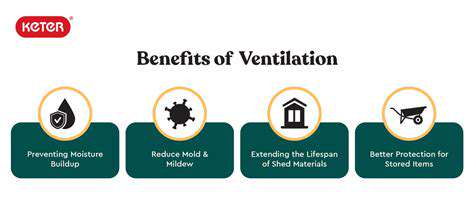Guide to Adopting a Pet with a Behavioral Issue
Developing a Consistent Training and Management Plan
Creating a Comprehensive Training Schedule
Developing a structured training schedule is crucial for fostering a positive and productive relationship with your new pet. This schedule should be tailored to the specific needs and personality of your animal, taking into account their age, breed, and any pre-existing behavioral tendencies. A consistent routine, including regular feeding times, playtime, and training sessions, will help your pet understand expectations and build a strong foundation of obedience and trust. This structured approach also allows for better management of their behavior and helps prevent unwanted habits from developing.
Consider dividing your training sessions into short, focused blocks throughout the day. This approach is more effective than trying to cram everything into one long session, as it maintains your pet's engagement and prevents them from becoming overwhelmed or losing interest. Consistency is key; sticking to the schedule, even on weekends or holidays, reinforces the training and helps your pet understand the importance of routine.
Implementing Effective Management Strategies
Pet management goes beyond just training; it encompasses various strategies to ensure a harmonious living environment for both you and your new pet. This includes establishing clear boundaries, creating safe spaces within your home, and understanding your pet's natural behaviors and instincts. For instance, identifying areas where your pet might be prone to destructive chewing or inappropriate urination allows you to implement proactive measures, such as providing appropriate chew toys or using deterrents in specific zones.
Understanding your pet's body language and cues is essential for effective management. Learning to recognize signs of stress, anxiety, or discomfort will enable you to adjust your approach and provide the necessary support. A well-managed environment reduces the likelihood of behavioral problems and strengthens the bond between you and your pet.
Utilizing positive reinforcement techniques is also a cornerstone of effective management. Rewarding desired behaviors with treats, praise, or toys reinforces the positive actions and encourages repetition. Avoid punishment-based methods, as these can lead to fear, anxiety, and a breakdown in trust. Positive reinforcement strategies create a more enjoyable and productive learning experience for both you and your pet.
Establishing a Robust Communication System
Effective communication is paramount to a successful training and management plan. This involves understanding both verbal and nonverbal cues from your pet, as well as clearly communicating your expectations to them. Using positive reinforcement, such as treats and praise, for desired behaviors is essential. This positive approach creates a more enjoyable and motivating experience for your pet, encouraging them to learn and respond positively to your commands. Consistent communication strengthens the bond between you and your pet.
Consider using visual aids, such as hand signals or visual cues, to complement verbal commands. This can be particularly helpful for pets that respond better to visual cues, and it adds another dimension to your communication. Learning to interpret your pet's body language is also crucial; understanding their posture, facial expressions, and tail movements can provide valuable insights into their emotional state and needs.
Regularly review and adjust your training and management plan to adapt to your pet's evolving needs and behaviors. This adaptability fosters a strong and mutually beneficial relationship, ensuring a happy and healthy coexistence between you and your new companion. Adjustments allow for the continuous improvement of your pet's behavior and well-being.

Read more about Guide to Adopting a Pet with a Behavioral Issue
Hot Recommendations
- Review: [Specific Brand] Small Animal Cage
- Why Rescuing Pets Saves Lives
- Best Pet First Aid Kits [What to Include]
- How to Help Stray Animals in Your Community
- Guide to Adopting a Pet When You Have Kids
- Top Reptile Heat Lamps
- Heartwarming Rescue Stories That Will Inspire You
- Review: [Specific Brand] Bird Cage
- Best Aquarium Filters [2025 Review]
- Review: [Specific Brand] Smart Litter Box


![Review: [Specific Brand] Pet Odor Eliminator](/static/images/33/2025-05/ValueforMoneyandAlternatives.jpg)

![Guide to Caring for [Specific Cat Breed, e.g., Maine Coon]](/static/images/33/2025-05/HealthConsiderationsforMaineCoonCats3AAProactiveApproach.jpg)


![Guide to Training a Fearful Dog [Building Confidence]](/static/images/33/2025-06/PatienceandConsistency3ATheKeytoSuccess.jpg)
![Best Grooming Tools for Your Dog [2025 Guide]](/static/images/33/2025-07/ChoosingtheRightToolsandMaintainingThem.jpg)

![My Pet's Unique Personality [Story]](/static/images/33/2025-07/DecodingtheLanguageofLove3AHowMyBirdExpressesHerUniquePersonality.jpg)
